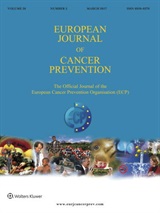Pre-diagnosis insulin-like growth factor-I and risk of epithelial invasive ovarian cancer by histological subtypes: A collaborative re-analysis from the Ovarian Cancer Cohort Consortium
Purpose Biologic evidence suggests that the Insulin-like growth factor (IGF)-family may be involved in the etiology of epithelial invasive ovarian cancer (EOC). However, prospective studies investigating the role of IGF-I in ovarian carcinogenesis have yielded conflicting results. Methods We pooled and harmonized data from 6 case–control studies nested within the Ovarian Cancer Cohort Consortium to…











